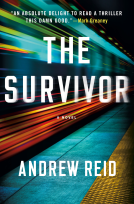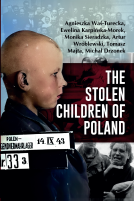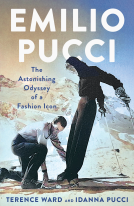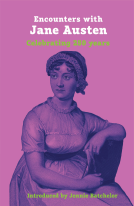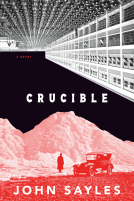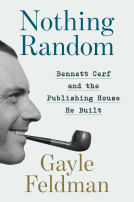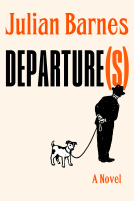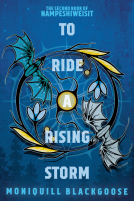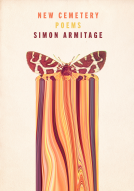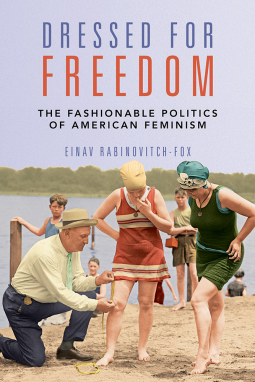
Dressed for Freedom
The Fashionable Politics of American Feminism
by Einav Rabinovitch-Fox
This title was previously available on NetGalley and is now archived.
Send NetGalley books directly to your Kindle or Kindle app
1
To read on a Kindle or Kindle app, please add kindle@netgalley.com as an approved email address to receive files in your Amazon account. Click here for step-by-step instructions.
2
Also find your Kindle email address within your Amazon account, and enter it here.
Pub Date Nov 16 2021 | Archive Date Feb 09 2022
Talking about this book? Use #DressedforFreedom #NetGalley. More hashtag tips!
Description
A fascinating account of clothing as an everyday feminist practice, Dressed for Freedom brings fashion into discussions of American feminism during the long twentieth century.
Advance Praise
"Fashion and feminism may seem antithetical, but Einav Rabinovitch-Fox cogently argues that they are closely intertwined. Her stimulating book highlights how Gibson girls, flappers, women designers, and even 1960s feminists saw modern clothes as an integral part of women’s freedom."--Kathy Peiss, author of Hope in a Jar: The Making of America's Beauty Culture
"Dressed for Freedom is an innovative exploration of the ever-shifting and complex relationship between feminists and fashion. Einav Rabinovitch-Fox shows how women as activists, designers, and consumers translated feminist ideas into everyday practices and turned shirtwaists and sportswear into the material through which women asserted identities and claimed rights to freedom of movement."--Maxine Leeds Craig, author of Sorry I Don't Dance: Why Men Refuse to Move
Available Editions
| EDITION | Other Format |
| ISBN | 9780252086069 |
| PRICE | $24.95 (USD) |
| PAGES | 288 |
Links
Average rating from 45 members
Featured Reviews
What an interesting history- the role of fashion in advancing the role of women in America. This history talks about some interesting trends in fashion that I was familiar with (the Gibson girl) but had not really connected relevance and the importance of the topics. This is a unique read and one that will speak to how popular life can have such an impact on the wider cultural and political discussions.
This is an example of how good political and cultural history can combine to produce a great story/argument/history.
If you are looking for some more nuanced history, check this out.
 Helen C, Reviewer
Helen C, Reviewer
If you've ever thought it didn't matter what you wore, and then found out how wrong you were, you know that the topic of fashion in the history of women's rights is not a frivolous or a minor topic. It's front and center and always has been. Einav Rabinovitch-Fox surveys the subject from the loose and adaptable shirtwaists that replaced the form fitting and constraining outfits of the turn of the 20th century to the white suits of Hillary Clinton and Alexandria Ocasio-Cortez. Flappers and World War II and trousers and Helen Gurley Brown and the inclusion/exclusion of Black Women in the Movement are all considered here, and more, and it's fascinating. I'm not sure I learned anything new but I have never seen it put together and analyzed in this way before, which makes it all new. Thanks to NetGalley and the publisher for a digital review copy.
Dressed for Freedom is the book you want when you're explaining the importance and significance of fashion in womens' history.
It's comprehensive, illustrative, and extremely well-written. This book answered many questions I had and ones I didn't know I had! It was so interesting to journey through fashion history with the eye of feminism so present.
Thank you to NetGalley and the publisher for this ARC in exchange for an honest review.
 Reviewer 546210
Reviewer 546210
This books looks at fashion for women between 1890-1980. It gives us a visual history of women and there fight for freedom and equality.
Working class women, bicycle transportation and rainy days drive the first fashions of freedom. Next paved the way for more movement, thus the flapper. It was only after war that we could even consider sports wear. Grrr. Later bar burning. Bar burning was not something I could get behind. I hate an ill fitted bar, but I personally have to wear one. (My choice).
“These women- whether Gibson Girls, Rainy Daisies, suffragists, bohemian feminists, flappers, fashion designers, Hollywood stars, or radical women’s liberationists- demonstrate not only that fashion and feminism could exist, but that fashion could serve as an effective realm for conveying feminist messages.”
I’m grateful for my wardrobe choices and the women who fought this battle for me. I can imagine not having the choices I have now. Thank you.
Thanks University of Illinois Press via Netgalley.
I’ve been on a history book kick lately and this one really scratched that itch. Fashion, as we’ve seen recently, has real world impacts (look the spotlight on “fast fashion” of late and all the harm it does). This book shows just how far back fashion has been used as both a tool of freedom as well as a tool of the oppressor. Recommended.
 Educator 263557
Educator 263557
We take many freedoms for granted, but ignore the freedom we have in choosing what to wear. The evolution of fashion and freedom is an interesting concept well defined.
 Reviewer 648416
Reviewer 648416
As I was reading I was consistently reminded of one of the core feminist principles which is “their personal is political” and yes that includes fashion. I particularly enjoyed the chapter regarding flappers since I’ve always been so enamored by the 1920s. I will say that I found the first chapter difficult to understand since I am not as familiar with 1880/1890s fashion. However, I throroughly enjoyed the rest of the book and the strong emphasis on how fashion itself is an expression of a woman’s right to choose.
 Vikki B, Reviewer
Vikki B, Reviewer
This is a wonderful gem of a book, very well written Einav Rabinovitch-Fox!
I was totally entertained by the history, dialogue and photographs throughout. As I read through the years I found the story enlightening, we automatically make choices now that once were debated and discussed as a matter for women and men to consider.
A superbly written storyline of clothing trends, the feminist side of the age and how fashion has evolved, I loved the ‘bloomers’!
I voluntarily read and reviewed an advanced copy of this book. All thoughts and opinions are my own.
Einav Rabinovitch-Fox, Dressed for Freedom The Fashionable Politics of American Feminism, University of Illinois Press 2021.
Thank you, NetGalley, for providing me with this uncorrected proof for review.
Einav Rabinovitch-Fox’s thoughtful approach to a topic that is likely to create some controversy is evident early in her book when, as well as the theory that fashion is a feminist issue, she refers to ‘second wave feminism’ (her quotation marks). I was intrigued by this apparent questioning of a phrase and idea, almost sacrosanct, that permeates much of feminist writing. Both aspects of the book are gratifying in that they suggest it is packed with ideas outside the understood notions of feminist history and fashion and its relationship to feminism and feminists. My belief that this would be an exciting book to review, and optimism have not been misplaced. I loved this engaging read with its solid research and support for the ideas Rabinovitch-Fox expounds.
Beginning with the politics of bloomers, the New Woman seen through Gibson Girls, Shirt Waisters and Rainy Daisies, then flappers and freedom, Einav Rabinovitch-Fox takes the reader through the fashion industry, style, Women’s Liberation, and the legacies of American Feminism, finishing with explanatory notes, a thorough index and a bibliography. As I flick through the index I see familiar titles such as Our Bodies, Ourselves and Off Our Backs, Ms. and Harper’s Bazaar and less familiar, Bust Magazine, Century, Charm and Cheap Chic; styles covering hairstyles, youth culture, corsets, hemlines and white, and black fashion movements; well-known women’s names including Amelia Bloomer, Charlotte Gilman Perkins, Susan B. Anthony, Betty Friedan, Germaine Greer and Helen Gurley Brown; mentions of men such as John Adams, Scott F. Fitzgerald, and John T. Molloy; and references to organisations from the early feminist movements such as women’s suffrage to modern critiques of gender and New York Radical Women.
Underlying the argument that implementing fashion are feminist ideas and ideology is Rabinovitch-Fox’s discussion of waves of feminism. She proposes that women’s activities have been ignored by a commitment to seeing feminist activity in waves. By ignoring a chronological approach to fashion and feminism early and mid-twentieth century work and ideas have been ignored. To add to this argument, it has always seemed odd to me that we talk of women’s activities being ‘hidden from history’ and yet suggest that there were periods in which there were no activists or activity worthy of the name feminist. The argument made here resonates and is supported by the way in which Rabinovitch-Fox’s narrative unfolds over twentieth century feminist activism and ideas associated with fashion. She claims, with convincing examples, quotes and examples of clothing devised for purpose, that women both used and adapted fashion to articulate demands for equality.
Fashion has been the subject of popular culture, with women making their way from poverty to successful entrepreneurs as in the British television program, The House of Elliott, and blockbuster novels in which women’s clothing is either the focus of business enterprises in which women excel, or a feature of their success as seen through fashion. These accounts, although providing women with a career, or designating success outside the domestic sphere, rarely venture into debate about class, race, and women’s freedom through clothing designed to fit that purpose.
However, the topic through Rabinovitch-Fox’s writing with its enthusiasm for description of the various fashions, melding of analysis and personalities, encouragement to the reader to question received understandings, competes with fiction for an engaging read. Add to this that the work is inspiring in its determination to give women a say about something that impacts them from morning to night, in the paid workforce or at home, as career women or parents, as part of a family or friendship group, as that being they look at in the mirror, Dressed for Freedom is an empowering and fascinating work. Studded with insight, this is a book to enjoy, ponder over, and re-read. I embraced every moment of doing so.
I received a copy of this book from NetGalley in exchange for an honest review.
This book was fascinating. It takes a look at a subject that most people consider shallow and infuses it with a surprising amount of depth!
 Ashley R, Reviewer
Ashley R, Reviewer
I received a free copy from Netgalley in exchange for an honest review.
I have always been interested in fashion. In the politics, the propaganda, the function and the differing forms and uses. However, I have rarely found books that are accessible, and as clear that I felt others would enjoy as much as I did. Though this is geared mainly towards the intellectual discussion, I believe anyone interested in the history and politics of fashion would do well to read this book.
For all those currently watching the political climate in America, there have been several major callbacks to those historical figures who came before, though I doubt many knew who were being referenced without the help of the news media in highlighting it. These figures are all discussed here, from something so small but so very vital to everyday life as pockets, to being able to dress ourselves again without the help of others. For so long, aspects of feminine clothing showed ways to make us reliant on others; especially on men. This book discusses the many ways politically how what is considered feminism and fashion are inextricably tied and will continue to change together.
 Reviewer 823951
Reviewer 823951
Very well written Einav Rabinovitch-Fox!
I was totally entertained by the history, dialogue and photographs throughout.
Definitely recommend
 elizabeth s, Reviewer
elizabeth s, Reviewer
Dressed for Freedom is an outstanding book about how clothing and fashion promoted feminism since the 1880s. Einav Rabinovitch-Fox is such an amazing writer and researcher that has obvious passion for the topic. The book is dense with information and facts about the history of fashion and feminism with a positive, empowered perspective. IFor example, the book covered Dorothy Shaver - head of Lord & Taylor who promoted American women designers like Claire McCardell during the 30s, rather than European male designers. Rabinovitch-Fox presents an uplifting history of women using fashion as a positive way to promote feminism. The auther also discusses the present and looks to the future (briefly). I have read through this book once and have pre-ordered the hard cover so I can read again and make notes. The book is inspring and engaging in the best way!
 Librarian 431790
Librarian 431790
Fashion is always been related to politics and social status. This is a well researched and interesting visual history of how it evolved between the end of XIX and XX century.
It's an interesting read.
Recommended.
Many thanks to the publisher and Netgalley for this ARC, all opinions are mine
An informative and enjoyable read! Rabinovitch-Fox's assessment of a century of women's clothing choices put a lot of things that I already knew into perspective. Interesting, the transformational nature of the Gibson Girl look and shirtwaists had on allowing women the freedom of movement while still maintaining the dignity of looking like a lady. The discussion on hem lengths was fascinating, and to think of how restricted women's lives were in inclement weather when their dresses dragged on the ground. Loved reading about the background of the white suit and also how clothing heralded and adopted for comfort and mass production while maintaining dignity became a mechanism for Black women to advance. This book is a keeper. It will generate much discussion and I know that I'll go back to it time and again.
#netgalley
 E W P, Reviewer
E W P, Reviewer
Dressed for Freedom: The Fashionable Politics of American Feminism is a book I have always wanted to read, and I’m glad Einav Rabinovitch-Fox has written it. It is a fast-paced but extensive account of the (sometimes trial and error) relationship between the evolution of women’s fashion and progress toward equality for women. Covering 1890 to 1980, it begins with bloomers and the Gibson Girl and does a good job of integrating matters of economic and social class (including working women), race, and sexual orientation. From the role of the bicycle, the shirtwaist, and mass production; to the suffrage suit, workhouse dress, and “marching suit” that smuggled in pants; to the politics of pockets; to an effective rebellion by women consumers across age, class, and race lines against the fashion industry’s attempt to lengthen hemlines in 1970; to the “success suit and yes, the pantsuit!, the book successfully draws on women’s apparel as primary source material for understanding women’s history. There is good information on the role of specific women designers and executives in the fashion industry (manufacturing, cosmetics, retail, advertising, and media), including Dorothy Shaver, president of Lord & Taylor, who promoted women designers and “American Fashions for American Women.” Political figures including Eleanor Roosevelt, Mary McLeod Bethune, and Betty Friedan and Bella Abzug also make an appearance in discussions of garment workers and unions, promotion of Black designers, and fashion and second wave feminism, respectively. The influence of the film industry and prominent actresses and costume designers on mainstream trends is also discussed.
Fashions have changed significantly over my life.
When I was a child growing up, I wore a dress with white gloves and a hat to wear to church.
In junior high, girls were made to kneel and if their skirts didn’t touch the ground they were sent home to change their clothes. Twiggy and Mod style and Sassoon hair cuts were big when I was a freshman in high school. Spring semester of my senior year of high school, we could wear pants—not jeans–on Fridays.
At college, girls wore jeans and long hair parted in the middle. My first full-time job women wore micro-mini skirts. At my tenth class reunion, several of us sported frizzy perms, a kind of Afro for white women. Dress for Success came along and for my first job in sales, I wore a Brooks Brothers navy suit with an oxford cloth button down shirt and ribbon tie, and high heels, and I carried a leather brief case but no purse.
I remember midi skirts, and maxi skirts, platform shoes and cowboy boots and transparent shirts and designer clothes and track suits–and now it seems everyone wears hoodies and sweat pants and expensive running shoes.
Whew. I have seen a lot of changes. Then, I think of my grandmothers who were born in the early 1900s and the changes they saw in her lifetime.
I had not considered the relationship between fashion and feminism. Weren’t Flappers just party girls? The Gibson Girl a mere fashion icon? I knew that Bloomers, the ugly harem pants under short skirts, were designed to allow women mobility. I remember Burn the Bra feminists. But fashion has a closer relationship to feminism than I had considered.
Dressed for Freedom debunks the myth that women’s freedom and fashion were incompatible, showing how icons from the Gibson Girl to Hollywood stars were intertwined with feminism. Considering class and race, working women in the city and activists who appeared on magazine covers, the author traces the transformation of fashion between 1890 and 1980.
Although only 272 pages, there is a lot of information packed into these chapters.
Beginning with the Gibson Girl, the white, middle class, active woman who wore shirtwaists and bicycle skirts, the author shows how dress reflected a ‘new woman’ who was active and attractive. The look was copied by woman of all classes, races, and adopted by suffragists. This correlation of fashions allowing women more freedom and the look being adopted by feminists, the author shows, continued. Feminists endeavored to counter accusations of being masculine by adopting feminine styles. Suffragettes adopted tailored suits with plenty of useful pockets. The more radical women took up Oriental-inspired loose, flowing dresses.
The 1920s saw society women and working women adopt the dropped waist, short skirts, and bobbed hair of the Flapper era. The thin fabrics, short skirt and open sleeves and neckline allowed freedom of movement. The boyish silhouette, focusing on legs instead of the bust, was the beginning of worshipping the youth culture. The simple construction boosted the home sewing pattern industry. And, no restricting corsets were needed.
Hurrah for shorter skirts–they give more freedom of movement–Hurrah for less clothes–they give more health. You don’t find many twentieth century girls fading away or swooning as it seemed the style to do in the 1880’s and 90’s. Now, they play golf, tennis, basketball, they go out for track teams, swimming and numerous other beneficial exercises that have improved the health of the female sex.
Dorothy Ilone Embry, Harlem Sub-Debs Association, 1927 as quoted in Dressed for Freedom
The look also impacted in negative ways, the look requiring dieting, chest binding, and frequent trips to the hair salon.
Many saw the Flapper style as reflecting a loosening of morality, while others recognized its connection to the growing freedom allowed women. I know my paternal grandmother worked in a factory in the 1920s and she is photographed in the simple dresses of this era. Whereas my maternal great-grandmother also worked in a factory while wearing long skirts, long sleeves, and the restrictive undergarments of 1900.
About the time I was born, the New Look returned to fashions that were beautiful but more cumbersome. Tight waists, full skirts ballooned with multiple petticoats, the torpedo bra, fancy hats and gloves. Sportswear then dominated. Shirtwaists, American designers, clothes for the working woman, Hollywood stars wearing pants, boxy coats with pockets. These were the fashions I dressed my Barbie doll in and that my mom wore when I was a girl and that I thought I would be wearing when I grew up.
Instead, as a teenager in the 1960s women’s lib and hippie fashion and short skirts and blue jeans and t-shirts took over. Fashion was all about looking like young teenagers again. I was weird to see my grandmother in a skirt above her knees at my wedding. Fashion followed the more radical element in society, evolving into Unisex and older people complaining they couldn’t tell the boys from the girls anymore. Makeup and hair was more natural. Mom had tortured me with perms as a child, but now I could wear long, straight hair.
In the early 70s, I was sporting an ERA pinback button at the same time female coworkers in the office wore micro-miniskirts that showed all when they bent over and men wore long hair and bell bottoms. The overt feminism of the time combined the struggle for economic equality and equality in the work place with women embracing their sexuality.
The book’s illustrations bring the descriptions to life. They show how suffragettes and feminists embraced style and beauty to prove that women can be equal and not ‘mannish.’
The book is enjoyable as well as informative. It was also an interesting way to consider fashion over my own lifetime as reflective of women’s gains in independence, equality, and power.
I received a free egalley from the publisher through NetGalley. My review is fair and unbiased.
 Carol C, Reviewer
Carol C, Reviewer
What an interesting book! It's fascinating to see how fashion has been influenced by history - and vice versa - through the years. The book is a unique look at a subject that is often overlooked.
 Sara M, Reviewer
Sara M, Reviewer
If you've ever wondered why women's clothing doesn't always seem to have pockets, or why women are sometimes pressured to wear restrictive clothes such as pencil skirts, you might relate to the women depicted in this book.
We learn about women challenging restrictive clothing from the 1890s to the 1970s, with the epilogue bringing us more or less into the present.
It's interesting to think about the ways that feminist activists have promoted feminist ideas through their clothing choices over time.
It's also fascinating to think about how those struggles overlapped with the onset of the modern age, and the changing ways women were perceived within mainstream society.
It is possible to use the book when adopting an intersectional approach, as ethnicity is considered, as is social class.
The author's own knowledge of intersectional feminist history and analysis shines through. For example, when reading about White feminists adopting Japanese dress, an Orientalist lens is evoked alongside an explanation of why these women might have chosen to do so at the time.
I was glad to see lesbian feminist clothing choices explored within the text, as they can often be forgotten.
Definitely a book to consider if you have an interest in the history of feminist activism, or the politics of fashion.
 Media/Journalist 204870
Media/Journalist 204870
It was my pleasure to feature this title in my annual personal favourite Books of 2021 round-up. I'll also be quoting from this informative and well-researched book (with attribution) in future features and columns.
 Reviewer 492564
Reviewer 492564
I really enjoyed this book on the history of fashion as a bellwether for feminist movements and progress. Rabinovitch-Fox has found some truly unique and interesting sources, and sews together the various forms and designs of women's wear and activities. Chronologically arranged, the book begins in the 1890s, detailing how the media played a role in driving fashion; how, as women opened up new opportunities for themselves, fashion adapted and how designers even offered commentary on such opportunities; and how women used fashion for political purposes. From Gibson girls to Gloria Steinem, this book is both an entertaining read and a deftly constructed and thoroughly researched work of scholarship.
Highlighting the use of fashion as a communication tool in bringing feminism into mainstream American society, Dressed for Freedom is thoroughly researched and a highly engaging book; particularly for those interested in the history of American women’s fashion and/or feminism.
In Dressed for Freedom, the author seeks to dispel a few common myths – primarily the myth of the stereotypically unfashionable feminist, and fashion being something frivolous and played no role in feminism. Tracing the history of American women’s fashion chronologically from the late 19th century to the present, the author discusses how feminists of each era (not just white feminists) harnessed mainstream fashion to promote feminist views and expand the movement to a wider audience. She also noted how fashion in itself was imbued with meaning and societal mores, and thus should not be seen as separate from feminist politics.
As an academic work (borne out of the author’s doctoral work), this book is full of in-depth analysis of the questions raised and includes sources that makes one want to find out more about either the feminists she centred in this book or this topic in general. Even though this is an academic book, it did not read as heavily scholastic and was an immense pleasure to read; and adds a unique perspective to feminist studies. I’d highly recommend this to anyone with an interest in politics, feminism and/or fashion.
Overall rating: 4.7/5
Many thanks to NetGalley, the publisher and the author for an e-copy.
 Malia Z, Reviewer
Malia Z, Reviewer
I've always been interested in fashion and history, so this book immediately caught my attention. It's well-researched and engaging and I came away from it wanting to learn more!
 Deb G, Reviewer
Deb G, Reviewer
4 fashion forward stars
“Feminism has a long and complicated relationship with fashion.” From bloomers to mini-skirts, Dressed for Freedom takes a scholarly look at women’s fashions. I could easily see the book in a college level women’s history class. Language, word usage and long sentences are probably too sophisticated for the casual reader to enjoy, unless they are really into fashion and women’s history.
I particularly enjoyed the discussion of fashions in the early 20th century. I learned many new tidbits: As dresses narrowed and the number of undergarments decreased in the 1910s, suffrage parades became a more feasible (and tolerable) experience. During WWII regulations introduced by the War Production Board restricted the used of fabrics, thus impacting fashions. I especially loved the drawings and the photos of women’s attire.
I appreciate that Rabinovitch-Fox included black activists who are too often overlooked in fashion and history books. Dressed for Freedom would appeal to more readers if the pictures increased significantly and the verbiage decreased significantly. The last quarter of the book cites detailed references. An index (citing over 20 pages on hemlines ;-) and bibliography would aid those doing further research.
Thanks to Netgalley and the publisher for providing an ARC of this book in exchange for an honest review.
This was really good.
I know that fashion reflects the culture of the time, especially concerning social standing, but this book brought this concept to the next level.
The author analyses all aspects of the evolution of women's fashion in the last century, connecting it to the historical event and social situation at every step. I enjoyed that she produced many obscure events, like the creation of the Rainy Day Club in 1890s New York, something that is difficult to find information on even with a lengthy google search.
She dedicates half of the book to the early 20th century (and the 1890s), understandably so, since huge changes happened in those decades. And honestly, I enjoyed that part a lot. It helped put everything else in perspective.
A great read.
 Daphne M, Educator
Daphne M, Educator
Ms Fox goes in depth to provide the reader with not only historical background but well researched parallels to the influence of ad campaigns and media to influence fashion trends. Once Wall Street began to weigh in on the trends and styles that were confining by design. The rejection of fashions that no longer spoke to the needs of women. The forms of rebellion were played out on the public stage. It’s amazing that clothing would hold such a lock on women over the decades. It evolution straddles the Womens movement on many levels. The rejection of convention began in earnest with the shot hemline of the 20’s flapper. It ebbed and flowed in concert with the economy. A great historical resource.
 Haley C, Reviewer
Haley C, Reviewer
I loved reading this book! It definitely has it's niche but I think many will enjoy reading this. I took a fashion history course in college and I wish it would have dived deeper into the symbolism and politics that some fashion trends had. Women speak a lot from their clothing and this book explains what they are trying to say.
I got this book for free from Netgalley in exchange for an honest review.
This is a fascinating look at the relationship between fashion and women’s self-expression. It’s a well-researched and interesting take on modern women and the meaning of our garb.
 Educator 813663
Educator 813663
Scholars of 20th century feminism, family, fashion, and culture will likely find this text interesting, if not exactly novel to the overall discipline. A well-researched and well-written account of its subject matter that would be interesting for new scholars to the subject, but still an enjoyable read for more seasoned scholars. Text is more intersectional than similar texts before it, so that's a benefit.
Readers who liked this book also liked:
Agnieszka Was-Turecka; Ewelina Karpinska-Morek; Monika Sieradzka; Artur Wróblewski; Tomasz Majta; Michal Drzonek
Biographies & Memoirs, History, Multicultural Interest
Jennie Batchelor, Julia Quinn, Natalie Jenner, Charlie Lovett, Talulah Riley, Janet Todd et al
Essays & Collections, Novellas & Short Stories, Women's Fiction
We Are Bookish
Mystery & Thrillers, OwnVoices, Teens & YA
